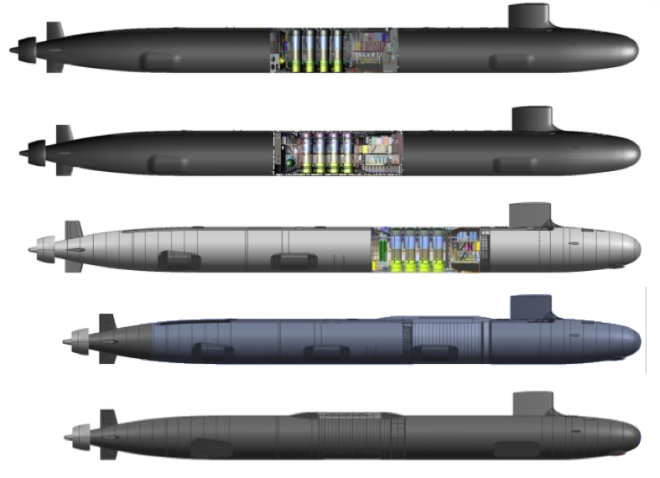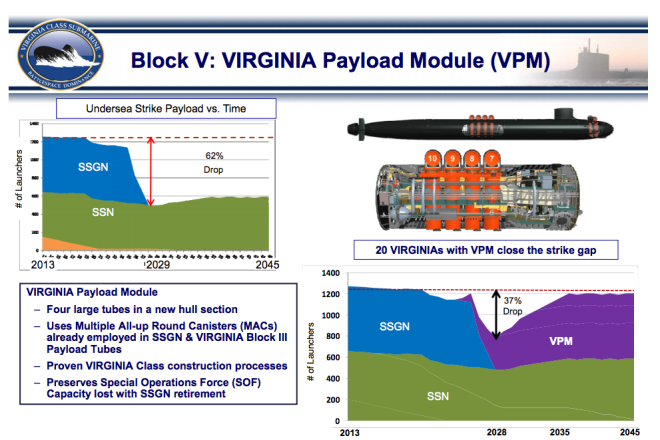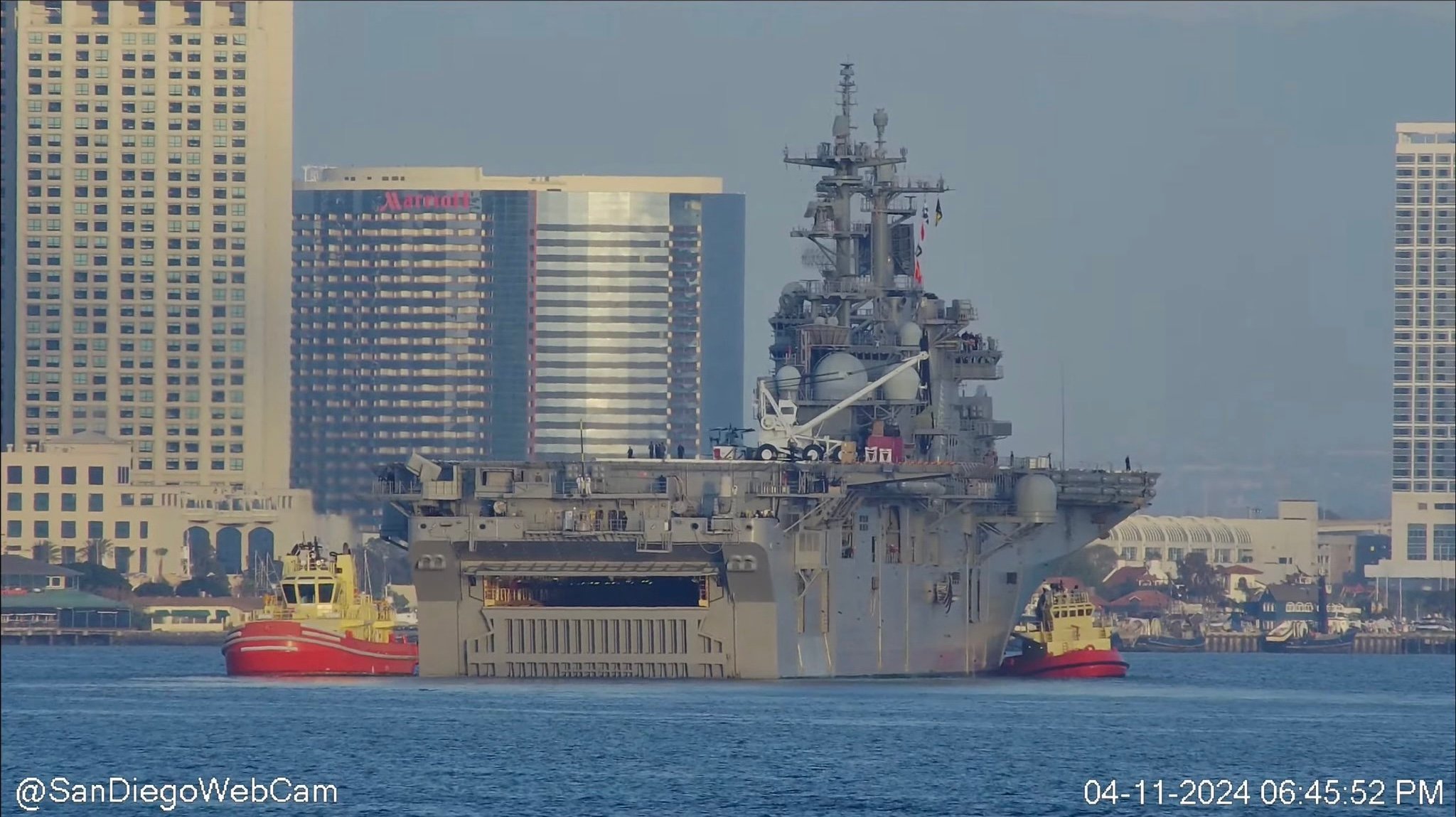
The Navy has selected a design concept to replace its nuclear guided missile submarines (SSGNs), NAVSEA officials told USNI News in an interview last week.
Late last month NAVSEA and the Navy settled on a design concept for the Virginia Payload Module, a $743 million design change in the Virginia-class nuclear attack submarines (SSN-774) that will eventually replace the current Ohio-class SSGNs as part of the Block V iteration of the attack boat.
The design will extend the hull by approximately 70 feet to include four so-called Virginia Payload Tubes (VPT) each containing seven Tomahawk Land Attack Missiles (TLAMs). Combined with two six-round VPTs in the bow, the total number of TLAMS per boat increases to 40, Capt. David Goggins, NAVSEA program manager for the Virginia-class, told USNI News on Oct. 31.

The design is the lowest cost option to include the four new VPTs to the Virginia, Goggins said.
“This work started in 2009 to really evaluate ways to mitigate the Tomahawk shortfall when the [SSGNs] retire between 2026 and 2028,” he said.
In 2003 the Navy began to convert the first four Ohio-class ballistic missile submarines to carry conventional weapons — mostly TLAMs. Since the first deployment in 2007, the Navy has had a high degree of success with the four submarines — each capable of fielding 154 TLAMs. USS Florida (SSGN- 728) was a centerpiece of the 2011 Operation Odyssey Dawn strike mission off of Libya.
The Navy thinks it needs at least 20 boats equipped with VPMs to makeup for the retirement of the four SSGNs.

In 2012 NAVSEA initially started with a VPM baseline with a longer hull insert that would have added an additional 97 feet to the submarine. In order to keep a clean line on the hull, the service had a plan to build a pressure hull that would go from the standard 34 feet to 26, Goggins said. The additional room between the pressure hull and the outer hull of the submarine would have contained the mechanics for the VPT doors.
Instead the Navy adopted a design that would add a faring on the dorsal side of the submarine to contain machinery for the VPT hatches.
“That’s easier to design and easier to build,” he said.
“From a construction perspective you don’t have this complicated work where you have to build this change in diameter for the pressure hull.”
The Block V boats will suffer a small acoustic penalty with the inclusion of the fairing but it will have less impact on speed and maneuverability of the submarine than the larger 97 foot baseline plan, Goggins said.

The VPM will build heavily from the design lessons from the earlier Virginias and design work on the Common Missile Compartment (CMC) for the planned Ohio Class Replacement program.
Funding for the VPM is in question however. In August the Senate Appropriations subcommittee on Defense (SAC-D) attempted to strip funding for the VPM.
“The Committee believes that the module’s requirements are not defined, and will result in instability to a proven submarine design, disrupt a stable production line, and add significant cost risk which is not affordable in these difficult fiscal times,” read the August recommendation from the committee.
The mark — as well as ongoing congressional budget strife over the Pentagon’s Fiscal Year 2014 budget — has delayed almost $60 million in FY 2014 funding for the preliminary VPM design.
The Navy has made the inclusion of the VPM a top budget priority.
The Navy plans for the first Block Vs to begin construction in 2019 with the first to commission in 2024, according to the Navy’s long-range shipbuilding plan.
The Virginias are built in a partnership with General Dynamics Electric Boat and Huntington Ingalls Newport News Shipbuilding.





